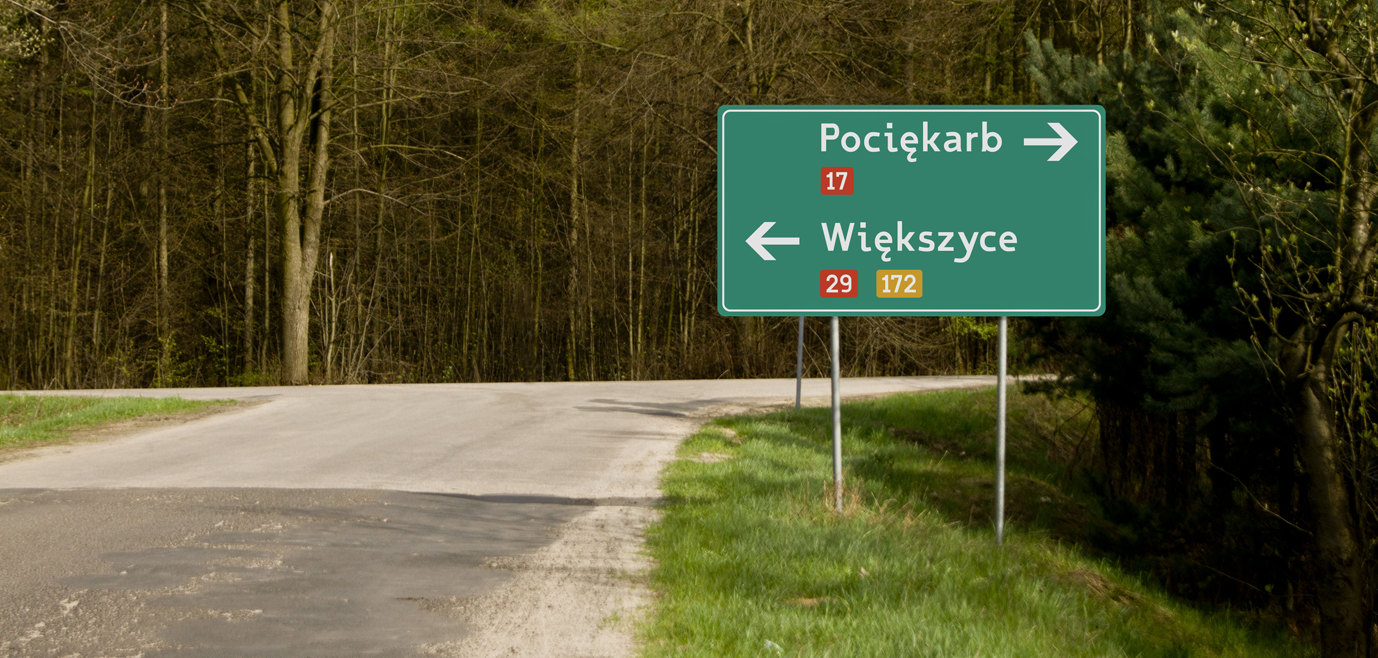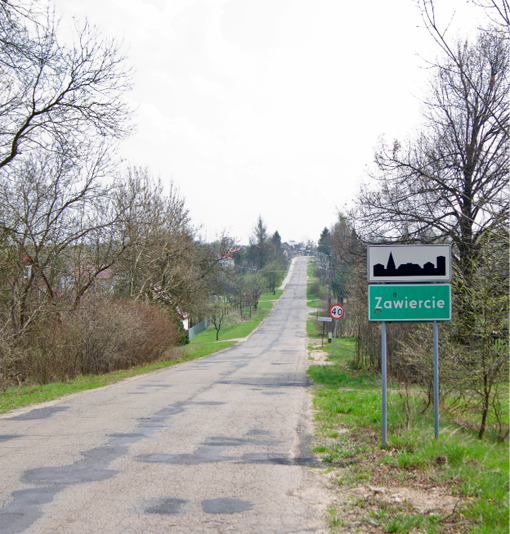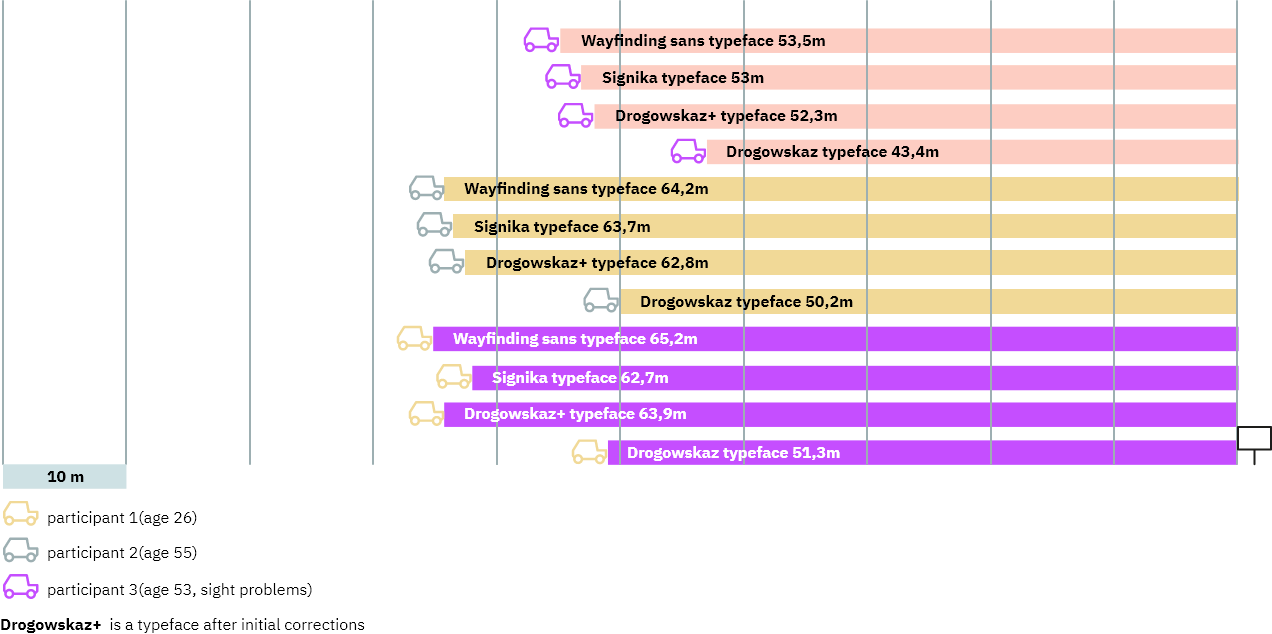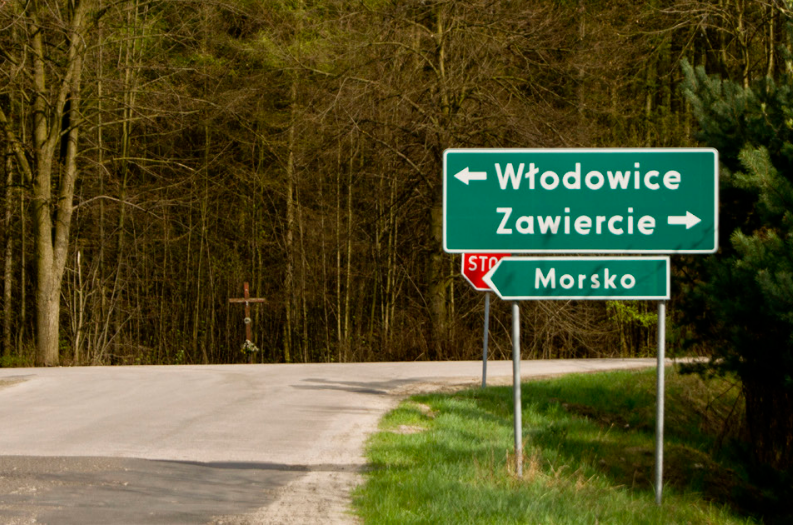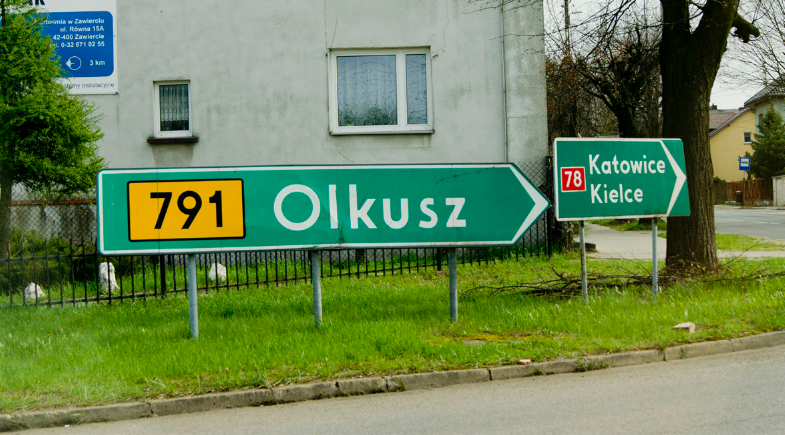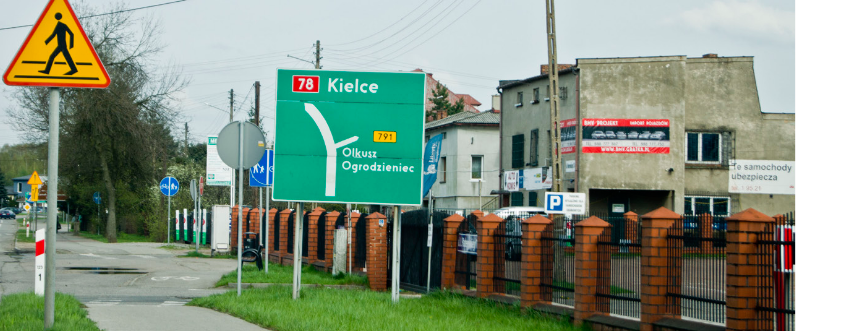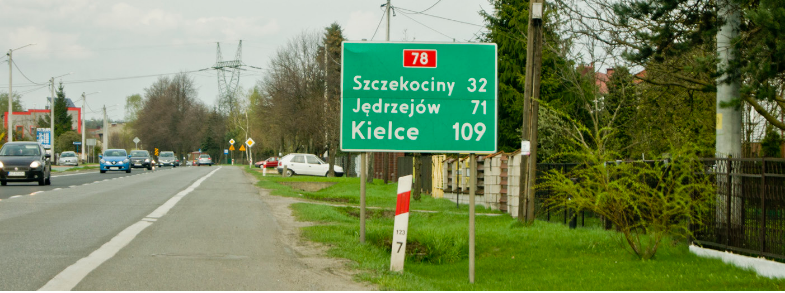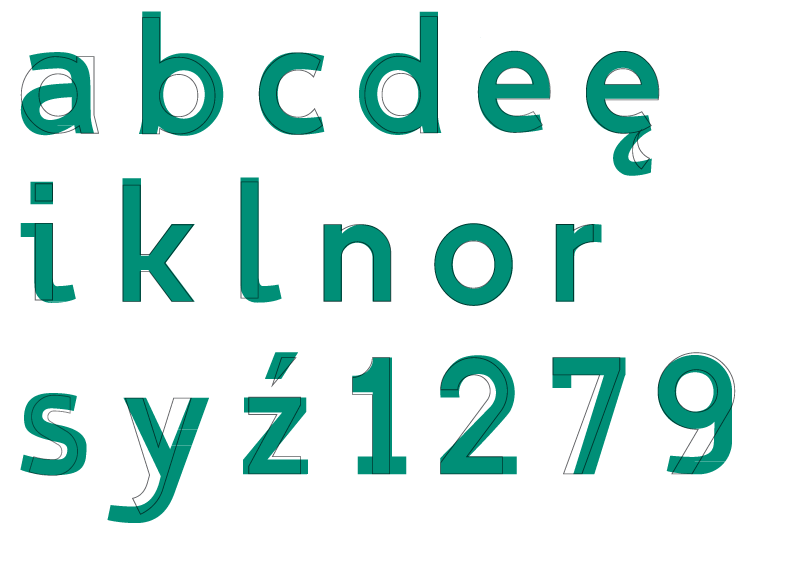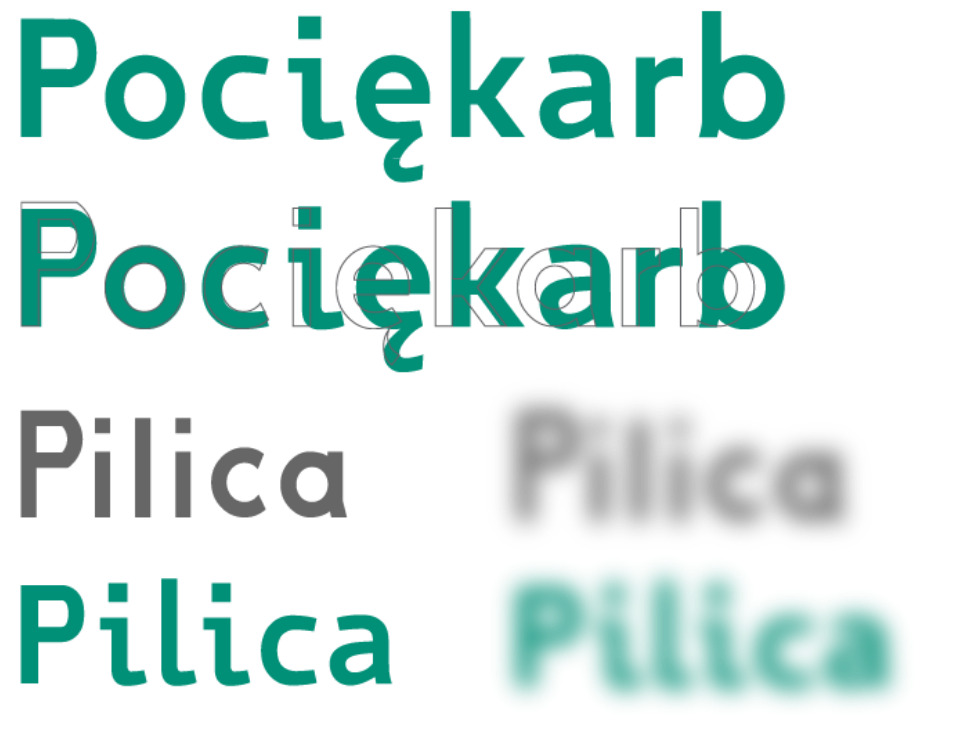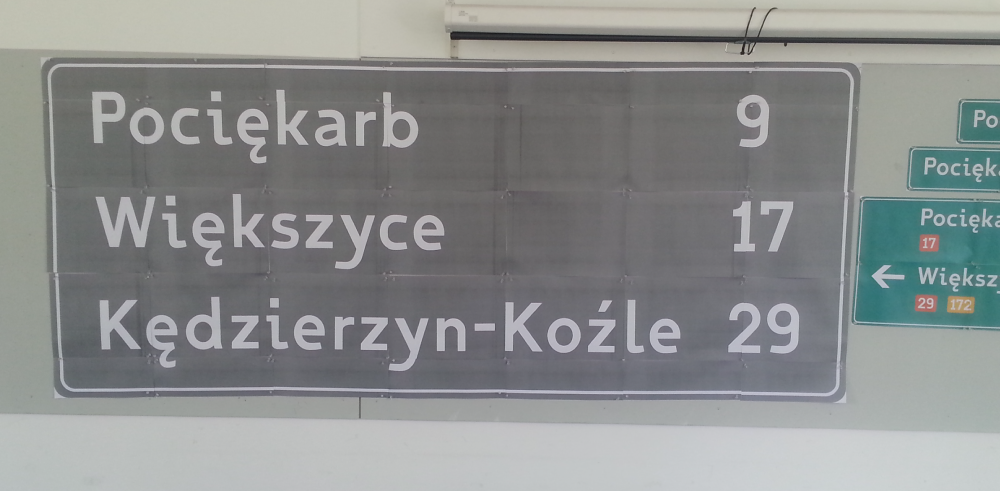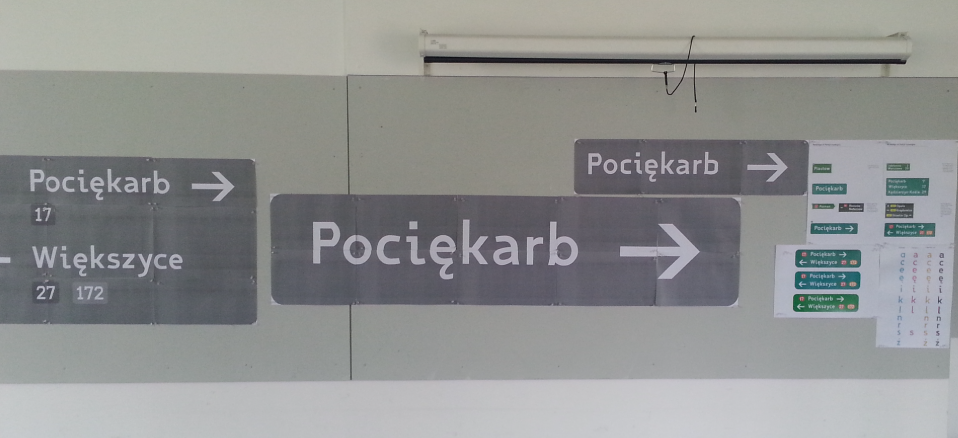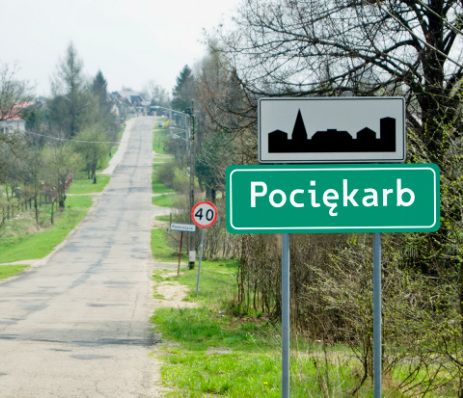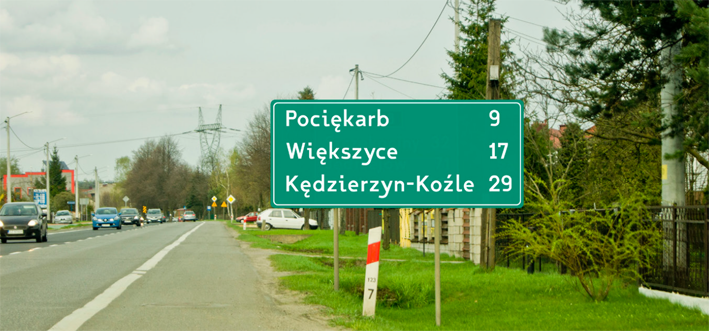brief
Introduction
The Polish road sign system has been revamped and became standardized and implemented as new in 1975. The Project was commissioned by Poland’s Ministry of Transport. Since then the Ministry has introduced only minor changes. The Signs are based on pictograms and the typeface designed by Marek Sigmund. The typeface was designed so that it could be easily reproduced by hand. But there are many problems including the lack of optical corrections, a small x-height and Polish diacritics that are hard to recognize. The designers of the original system were not able to anticipate the tremendous growth of the road system as well as the increase in the speed of traffic in Poland during the next four decades. The next problem is that signs nowadays are designed by engineers and lawyers who use computer programs to generate the signage system solutions for particular roads, as a result, it can cause problems and a lack of consistency on roads which is confusing for drivers (Jerzy Gruszczyński 1-2/2011, pp24- 27 MagazynAutostrady, “Inwestycjesektorapublicznego, Oznakowaniedróg – prawo a praktyka” ).
